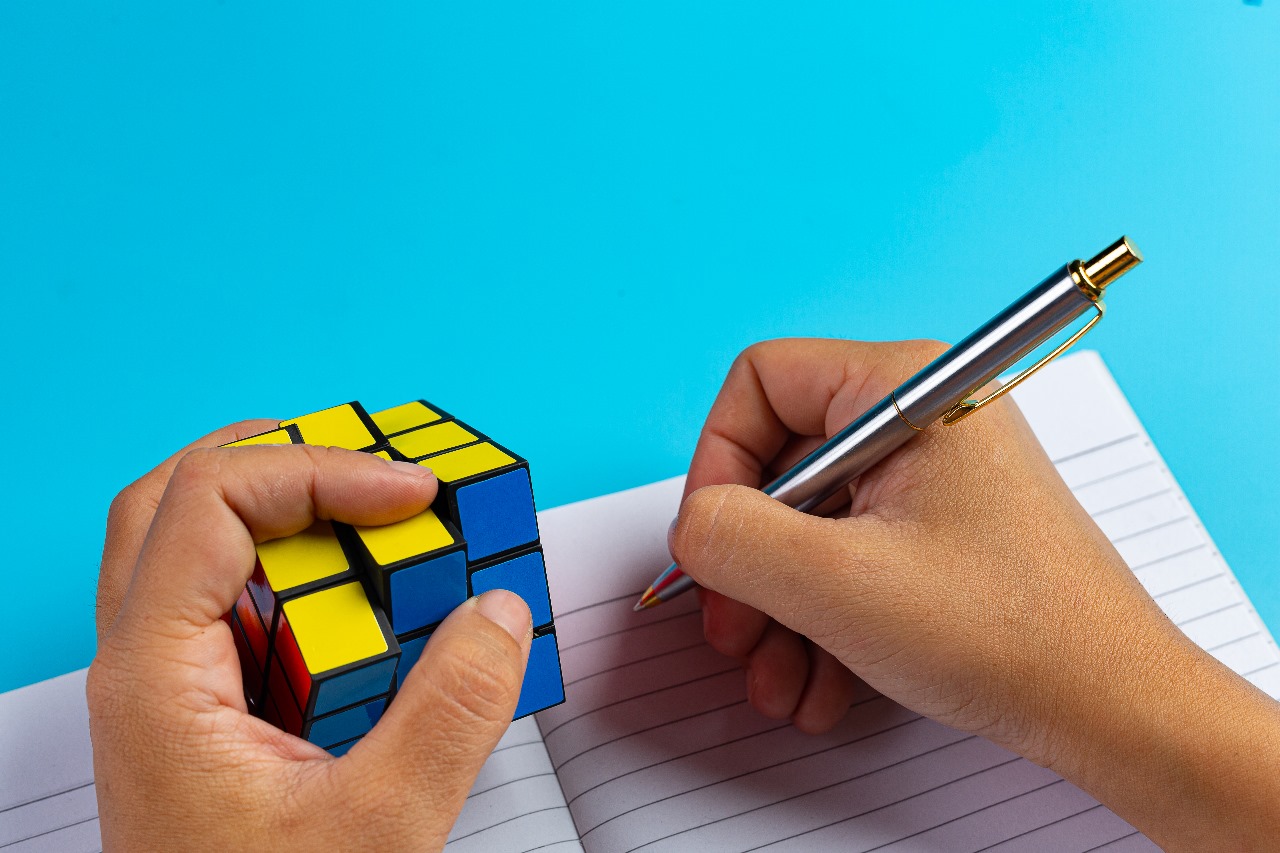
How to Solve a Rubik's Cube | Tips From NextGen Mindz
Read this step-by-step guide on how to solve Rubik’s Cube. With the tips & advanced techniques, you also can play like a pro with ease. Read now!
The Rubik’s Cube, a colorful puzzle that has captured the curiosity of millions, is a great way to challenge your mind and enhance cognitive abilities.
Whether you’re a beginner or aiming to become a speedcuber, learning Rubik’s Cube can offer a sense of achievement and provide various mental benefits.
In this blog, we’ll guide you on how to solve Rubik’s Cube for beginners. We’ll also share useful Rubik’s cube solving tips from NextGen Mindz, and help you unlock the secrets behind this fascinating puzzle.
Brief History of the Rubik’s Cube
Invented in 1974 by Hungarian architect Ernő Rubik, the Rubik’s Cube was initially designed as a teaching tool for students to understand three-dimensional geometry.
It quickly became a global sensation, challenging people of all ages to master its intricate patterns.
Over the years, it has evolved into not just a toy, but a competitive sport with speedcubing events taking place worldwide.
Why Solving a Rubik’s Cube is a Great Skill
Learning how to solve a Rubik’s Cube is not only a fun puzzle but also an excellent way to improve your puzzle-solving techniques, patience, and concentration.
The cube encourages logical thinking, spatial awareness, and memory retention. Whether you’re solving it for fun, as a hobby, or for competitive reasons, learning Rubik’s Cube offers countless benefits that extend beyond just the cube itself.
What are the key benefits of learning to solve the cube?
- Improved Problem-Solving Abilities
Each twist and turn of the cube is a problem to solve, which can enhance your logical thinking and decision-making skills.
- Increased Patience
It may take time to master the Rubik’s Cube, but the process teaches persistence.
- Boosted Memory and Concentration
Remembering algorithms and keeping track of the cube’s orientation helps sharpen memory.
- Stress Relief
Engaging with the cube can be a relaxing and rewarding experience that helps take your mind off daily stresses.
Understanding the Basics
Before diving into the steps of solving a Rubik’s Cube, it’s important to understand the cube's anatomy.
Anatomy of a Rubik’s Cube
A standard Rubik’s Cube has six faces, each containing nine smaller squares of a single color. These colors are typically white, red, blue, orange, green, and yellow.
The cube’s movement is facilitated by a mechanism inside that allows it to rotate around its axes.
- Corners: The cube has 8 corner pieces, each with three colored stickers.
- Edges: There are 12 edge pieces, each with two colored stickers.
- Centerpieces: The 6 centerpieces each display one color and are fixed in position relative to each other.
Color Arrangement and Cube Orientation
Each side of the cube should ideally match the color arrangement for a completed cube. The centerpieces are key in understanding this orientation, as they indicate the fixed color for each face.
Importance of Cube Notation
Cube notation is essential for following Rubik’s Cube algorithms. The standard notation involves the following:
- F (Front): the side currently facing the solver.
- B (Back): the side opposite the front.
- U (Up): the side that lies above or over the front.
- D (Down): the side opposite the top, under the cube.
- L (Left): the side opposite to the left front.
- R (Right): the side next to the front's right.
Understanding these notes will help you read and understand Rubik’s Cube patterns effectively.
Beginner's Step-by-Step Guide to Solving a Rubik's Cube
Below we’ve mentioned Rubik’s Cube solving tips tailored for beginners:
1. Solve the White Cross
Solve the white cross on the upper face in the beginning. The goal is to align the white edge pieces with the white center and match the other color on each edge with the respective center color on the adjacent faces.
2. Complete the White Corners
Next, solve the white corners by positioning the white corner pieces between the edge pieces, ensuring the other two colors align with their respective centers.
3. Solve the Middle Layer Edges
Once the white face is completed, turn your attention to solving the middle layer. Position the edge pieces in their correct spots without disturbing the solved white face.
4. Create the Yellow Cross
Flip the cube over so the yellow center is now on top. The goal is to form a yellow cross on the top face. Use algorithms to correctly orient the yellow edge pieces.
5. Position the Yellow Corners
Position the yellow corner pieces in their correct spots (even if they’re not yet oriented correctly) using a specific set of algorithms.
6. Align the Yellow Edges
Finally, orient the yellow corner pieces and adjust the edges to complete the cube.
Advanced Tips for Speedcubers
Using advanced methods to solve the cube
For those interested in speedcubing or refining their skills, practice advanced methods like CFOP (Cross, F2L, OLL, PLL), Roux, and ZZ.
Tips for Improving Finger Speed and Dexterity
Speedcubing is all about efficiency. Practice Rubik’s Cube tricks with your fingers to increase your dexterity and improve your move speed. Try to minimize pauses and focus on smooth, continuous movements.
Recommended Practice Routines
The fastest way to solve a Rubik’s Cube is consistent practice. Start by practicing the step-by-step Rubik’s Cube guide. Gradually it will increase your solving speed, and keep track of your times to see improvement.
Common Challenges and How to solve a Rubik’s Cube's challenges
Solving a Rubik’s Cube can challenge you, but don’t let that discourage you as there are various ways to overcome them.
1. Misaligned Colors
If the colors don’t match, check the direction of the centerpieces. If they’re incorrect, you may need to reset the cube and start again.
2. Stuck on a Specific Step
If you’re stuck, don’t be afraid to refer back to guides or take a break before trying again.
3. Overcoming Frustration
It’s normal to feel frustrated during the learning process. Take it one step at a time. Remember, solving a Rubik’s Cube is a journey, and persistence pays off.
Tools and Resources for Better Learning
Here are some tools and resources to help you on your Rubik’s Cube journey:
- F (Front): the side currently facing the solver.
- Rubik’s Cube Brands: Look for high-quality cubes like the GAN or MoYu for smooth turning and durability.
- Apps and Simulators: Apps like CubeX and 21 Moves can help you practice algorithms and visualize moves.
- Online Tutorials and Communities: Watch and subscribe to YouTube channels or take online tutorial classes from NextGen Mindz.
FAQs
Q1. What is the easiest method to solve a Rubik’s Cube?
The beginner's layer-by-layer (LBL) method is the easiest approach, focusing on solving layer by layer.
Q2. How long does it take to learn to solve a Rubik’s Cube?
It can take the average person about three hours to solve a Rubik's cube for the first time.
Q3. Does solving a Rubik's Cube enhance cognitive abilities?
Yes! Rubik’s Cube is a powerful tool for boosting cognitive skills.
Q4.What is the world record for solving a Rubik’s Cube?
As of 2024, the world record for solving the Rubik's cube is under 3.13 seconds by Max Park.
Q5. Why are algorithms so crucial for solving a Rubik's Cube?
Algorithms reduce complexity and help learn in memorizing steps.
